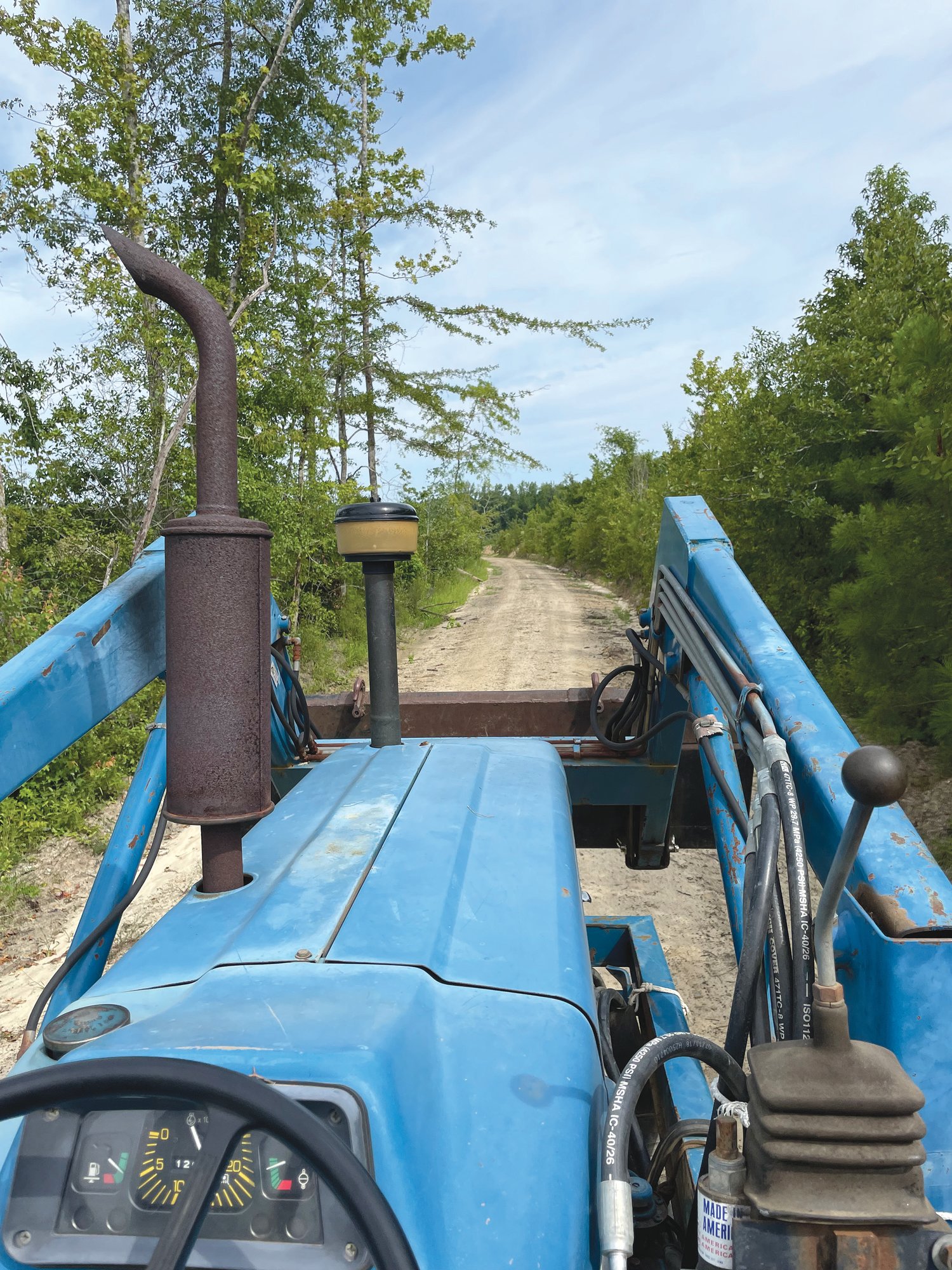Sumter outdoors columnist Dan Geddings: Tractor time
Sumter outdoors columnist
The wide scrape blade pulled a roll of dirt along and left a smooth surface on the road behind the tractor. At the intersection, I turned the big tractor around and went back over the road. I adjusted the scrape blade height with a small lever at my side. I had the tractor in low first gear with the throttle at about half speed. The slow speed and steady progress gave me a good result to the road surface.
Traffic during a recent wet spell had left some puddles and ruts in the wet areas. Now the roads are mostly sandy and dry. There are some grassy areas that I have skipped over. Some of the roads that run through the timbered sections are covered in pine straw and leaf litter. There are some weeds and saplings along the edges. They don't need to be scrapped.
The timber company had brought in a motor grader and plowed most of the roads earlier in the summer. Now that it is hot and the roads are dry, I'm running the scrape blade back over the dirt-surfaced roads to smooth them out.
There is some erosion on sections of the roads that are in hilly areas, but I've been able to treat those areas with some durable material. A local construction crew had been making a repair on a nearby highway and needed a place to dispose of the crushed asphalt and stone base. We allowed the crew to park their equipment inside our gate, and they gave us all the disposable material.
I've used the tractor bucket to scoop up the crushed asphalt and spread the material on some of the eroded areas. Then I've pulled the scrape blade over the material to smooth it out. The asphalt and stone will be able to withstand the effects of erosion much better than the local sand and clay. We have several piles of the material stockpiled that we can use in the future.
I've bush hogged some of the roads that were not bladed by the timber company. Most are in timbered sections. Weeds, bushes and saplings will crowd in from the sides and make a road impassable unless some maintenance is done. I usually go down each side of the road, then back down the middle. If there is some sunlight, grasses will take over and can be mowed more efficiently. The grassy roadways are unlikely to suffer erosion and make the property look more cared for. Turkeys, quail and other birds will use the grassy roadways for bugging.
Most hunting clubs will have some tractor time before the hunting seasons start. Some members have tractors, or the club will rent a tractor. Some clubs, like ours, plant food plots and do road maintenance during the summer. One of our landowners has several tractors, and we have been able to borrow one on occasion. Another member can borrow a tractor from a part-time employer, and I've rented one on occasion if the need was great.
We've also used four-wheelers and some of the scaled-down implements to do food plot work. And we've usually gotten good results with those machines.
There is more work to do on the land. The roads will need more scraping, and there is more bush hogging to do. We still need to use the tractor and an auger to bore post holes for a gate and a couple of sign-in boxes. Most of the work will be completed before September, but some will come later. The winter food plots can't be planted until cooler weather. Roads will still need plowing.
I don't have one now, but I've owned tractors in the past. Running a tractor on a hunting club is fun and is satisfying when you can see the results of the hard work. I like doing the tractor work as much as the scouting and hunting. I will be buying my own tractor before next summer to use on my own property and on our hunting club.
Reach Dan Geddings at cdgeddings@gmail.com.
More Articles to Read

